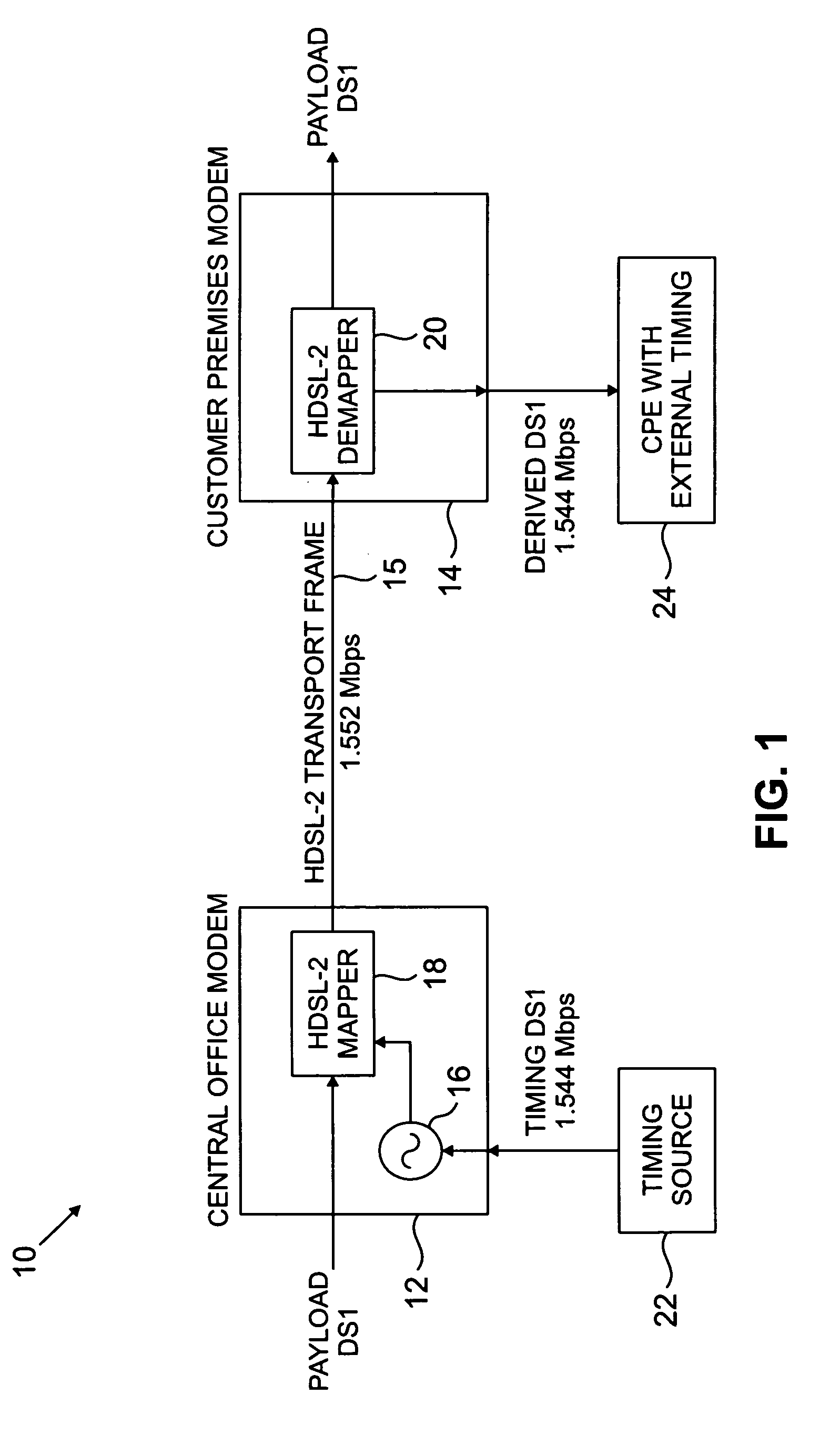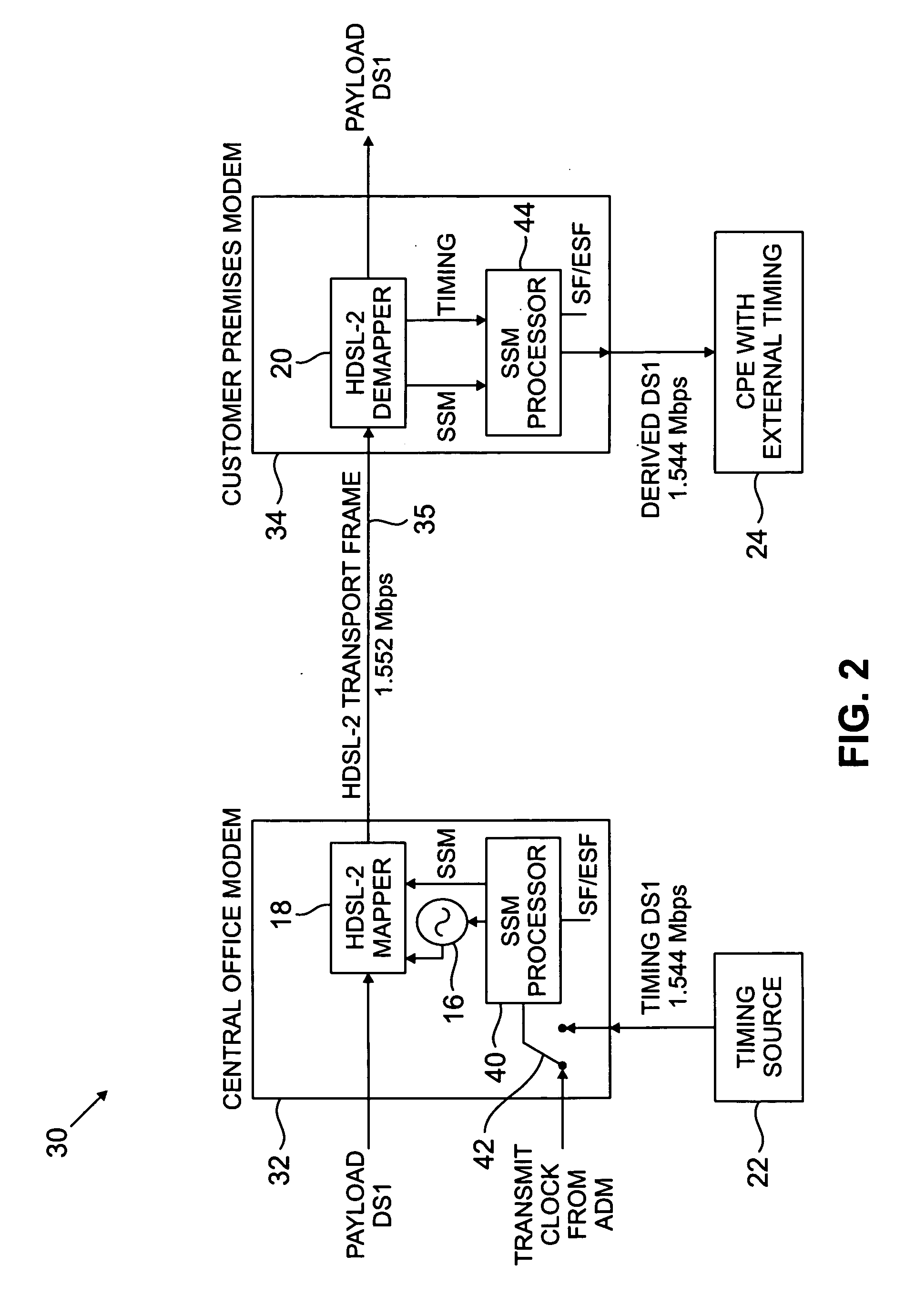Method and apparatus for synchronization of high-bit-rate digital subscriber line signals
a high-bitrate digital subscriber and line signal technology, applied in the field of communication systems, can solve the problems of adding a significant amount of phase noise to the ds1 payload, phase noise introduced by the ds1 payload itself, and the approach often requires the addition of substantial delay
- Summary
- Abstract
- Description
- Claims
- Application Information
AI Technical Summary
Problems solved by technology
Method used
Image
Examples
Embodiment Construction
[0010]The present invention will be illustrated below in conjunction with exemplary HDSL processing hardware. It should be understood, however, that the disclosed techniques are suitable for use with a wide variety of other types of communication systems, including other types of DSL systems. For example, the invention is applicable to types of DSL transmission other than HDSL2, including, e.g., single-pair HDSL and multiple-pair HDSL, as well as other types of techniques used in conjunction with the transport of information over existing wired connections. The term “transmitter” as used herein is intended to include a modem, a modulator, or any other device capable of generating and / or transmitting a modulated signal. The term “receiver” as used herein is intended to include a modem, a demodulator, or any other device capable of receiving and / or demodulating a modulated signal.
[0011]FIG. 1 shows a portion of a communication system 10 in accordance with a first illustrative embodime...
PUM
 Login to View More
Login to View More Abstract
Description
Claims
Application Information
 Login to View More
Login to View More - R&D
- Intellectual Property
- Life Sciences
- Materials
- Tech Scout
- Unparalleled Data Quality
- Higher Quality Content
- 60% Fewer Hallucinations
Browse by: Latest US Patents, China's latest patents, Technical Efficacy Thesaurus, Application Domain, Technology Topic, Popular Technical Reports.
© 2025 PatSnap. All rights reserved.Legal|Privacy policy|Modern Slavery Act Transparency Statement|Sitemap|About US| Contact US: help@patsnap.com



